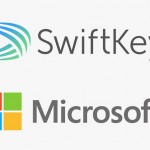How to Set up a Call Center Without Breaking a Bank
Launching a call center may be a tough task. We’ve broken down the process into simple steps to make it a bit easier.

Define Your Business Goals
Why do you need a call center? It’s the first question you should ask yourself. Define the business goals you want to achieve. Are you going to increase lead generation and get new customers? Or, maybe, you want to improve payment and order processing? Answering customer questions, providing technical support, informing customers – all these goals require different actions to achieve and different digital tools to use.
Decide on Your Call Center Type and Workflow
On-site or Virtual
On-site call centers are physical offices where agents handle calls. Despite the impact of the COVID-19 pandemic, such facilities are still relevant. Some industries simply aren’t allowed to have remote call centers so businesses continue to run them. Their most important benefit is that you can provide in-person communication and training for your employees. However, these call centers make you dependent on geographical location. You have to take many factors into account: distance to headquarters, public transportation, parking spaces, infrastructure issues, etc. Moreover, it may happen that you won’t find as many qualified employees as you need in your location.
Virtual call centers are cloud-based. Their agents can work remotely from any place that has a stable internet connection. The most obvious advantage of a virtual call center software from Voiptime is its flexibility and scalability. You can easily scale the number of agents’ seats during the season and manage the performance of remote employees from different time zones. Also, it’s cost-effective as your company can save on facilities and hardware costs.
Inbound, Outbound or Multichannel
The purpose of an inbound call center is to receive and process incoming calls. As a rule, these call centers are run by support teams that help customers to solve problems they have with your product or service. Also, you can use an inbound call center for order and payment processing.
Outbound call centers are sales-oriented. They make outgoing calls to prospects or existing customers. Outbound agents are generally your sales team members that are selling your products or services. An outbound call center is also ideal for setting appointments, running telesales or telemarketing campaigns, generating leads, and conducting market research.
Multichannel call centers combine both inbound and outbound activities. Moreover, they can be used for processing non-voice channels. For example, if you run an e-commerce business, your agents can receive incoming calls from customers and handle live chats on your website. Also, they can make outbound calls to confirm orders and send SMS or emails to inform customers about new products, promotions, etc.
After deciding on the call center type, you should think about its workflow. What actions do your agents have to take when handling customer complaints? When do they transfer calls and to whom? What customer queries have to be transferred to self-service tools (IVR, chatbots, FAQ section on your website)? Work out all these procedures in advance to prevent unpleasant situations that may harm your brand’s image.
3. Build Your Team

Decide How Many People You Need
Staffing is one of the most important questions to address when setting up your call center. How do you arrive at the right number of people? Take the following factors into account.
- Call center setup. If you are planning to have a virtual call center, start small. A small, experienced team will be a good option. Firstly, it’s easy to manage in remote mode. Secondly, these people can work fairly independently and stabilize your workflow faster. If you set up an on-site call center, the number of employees should be bigger. Why? It’s quite a costly business now, so you’ll need more people to reach your revenue targets. It’s not necessary to hire only experienced agents: a balanced mix of trainees and seasoned agents can save you money on salaries and training costs.
- Type of activities. Different types of calls and other contacts require different numbers of agents to handle them. In some cases, you can use online calculators to make estimation easier. For example, the number of agents for inbound calls can be estimated by using Erlang C Calculator.
However, there is no formula that can give you the exact number of agents. Only with accumulating market knowledge and historical data, you will become more accurate in forecasting the number of staff you need.
Plan and Launch a Recruitment Process
Create an agent’s persona. Start with the list of traits you are looking for. As a rule, these are confidence, tone, attention to detail, and empathy. Then, make a job description. What specific skills are you looking for? Maybe, they are expected to speak foreign languages, be familiar with the ins and outs of your industry, and have some digital competency? Describe the job requirements and responsibilities of agents without vagueness. It especially matters in a virtual call center as you have access to a larger talent pool and are more likely to hire the exact person you need.
Plan and launch the multi-level interview process. Thus you can limit the time required for hiring. It will be helpful both to remote and on-premise call centers. The first level of the interview process includes a competency-based assessment to check if our candidate has the necessary skills and a high level of motivation. The second stage is a behavior-focused interview. Your recruiters ask behavioral questions to understand how the candidate responds to a specific workplace situation. And the last, third level is an interview in each of the channels they will be supporting.
Make a pre-employment screening. This part of the recruitment process has always been important and it is even more important for remote work. You hire people whom you may never meet in person. Nevertheless, they will have a significant impact on your company’s experience. So their background has to be checked as thoroughly as possible.
Provide Training
Training is another filter your candidates go through. It ensures that they are capable of doing their job. Moreover, it helps your newbies understand if the agent’s position is their cup of tea. Therefore be ready to see some attrition during the training.
In a virtual call center, the training program has to be as detailed as possible. Your agents won’t have the opportunity to learn from more experienced colleagues as they could do while working on-premise. As a rule, training programs for call center agents include:
- Product-specific training: providing information about your company’s products or services
- Sales and language training: teaching how to show empathy and positive language
- Call center basics: roleplaying sessions, working with call center software
- Shadowing and nesting: working with experienced employees in real conditions
4. Plan the Infrastructure
Hardware
- Computers. Choose them depending on the requirements of software vendors you are going to work with. Low-power machines are preferable for an on-premise call center because they have low heat emission and don’t affect office microclimate too much.
- Headsets. The best option is a headset with two headphones and a noise-canceling function. Do not try to cut down on this device: professional headsets will provide your agents with quality sound and comfort.
- Phone. There are two options: an IP phone and a softphone. The first is a phone with an Internet connection that is more expensive but also more reliable. The second is a free software application that is installed on the agent’s computer. The softphone is a good fit for a virtual call center.
- Server room. Although call centers are migrating to the cloud, in some industries data is required to be stored on-premise because of security risks. The server room houses servers, telecommunication equipment as well as some additional hardware that the call center needs to function.
Internet connection
We strongly recommend using an ethernet or wired connection. It is much more stable than Wi-Fi so your agents won’t experience interruptions during the calls.
5. Choose the right software
Virtual call center software
There are many cloud-based call center solutions designed to handle voice and non-voice interactions with customers. Here are the must-have software features both for a virtual call and on-premise call center:
- Automatic Call Distribution (ACD)
- Interactive Voice Response (IVR)
- Dialers (Preview, Power, Predictive)
- Live call monitoring
- Call recording
- Reporting tools
- Script construction
- Integration with other business systems (CRM, ERP, KMS, etc)
- Multichannel (if you are going to handle web chats, emails and other channels)
Collaboration tools
These are digital tools for your team members that ensure seamless collaboration. It is especially important for a virtual team where you can’t just gather everyone to the meeting and assign tasks. For communication, you can use Slack that is quicker and easier to use than traditional email. Project management will be easier with such tools as Monday, Trello, Asana that allow you to assign tasks and manage tasks and initiatives within your team or company as a whole. Zoom is a good video conferencing tool that includes such features as screen-sharing, file exchange, and messaging in group or individual chats.
As you can see, setting up a call center without breaking the bank is real. Modern cloud-based call center software and IP telephony allow you to launch without significant upfront costs.








![Apple Still Rules Mobile Industry [Amazing Infographics]](https://technofaq.org/wp-content/uploads/2016/08/realtime-stats-150x150.png)







